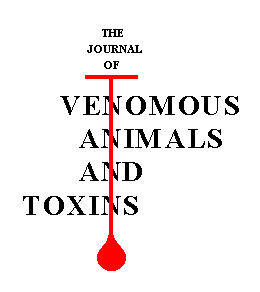Acute myocardiopathy in experimental dogs and rabbits was induced by subcutaneous (SQ) injection of 3.5 mg/kg of scorpion venom from Mesobuthus tamulus concanesis, Pocock. An increase in circulating lactic dehydrogenase (LDH), serum glutamic oxalacetic transaminase (SGOT), creatine kinase-MB isoenzyme (CK-MB), serum glutamine pyrovate transaminase (SGPT) and alpha hydroxy butyrate dehydrogenase (HBDH) enzyme levels was observed in dogs 60 min after venom injection, and a further rise was observed 120 min after venom injection. The administration of the species-specific scorpion antivenom (SAV) at different time intervals after venom injection resulted in reversal of electrocardiographic changes and a reduction in cardiac enzyme levels. The administration of SAV to scorpion envenomed alloxan-pretreated animals did not cause clinical or biochemical improvement. On the other hand, administering insulin to envenomed only animals or envenomed alloxan-pretreated animals resulted in a biochemical and clinical improvement, as well as in a reduction of the cardiac enzyme levels. Insulin administration in scorpion envenoming syndrome is essentially a metabolic support to control the adverse effects triggered by catecholamines and other counter-regulatory hormones.
Mesobuthus tamulus concanesis; electrocardiography; glutamicoxalacetate transaminase; glutamine pyruvate transaminase; lactate dehydrogenase; creatine kinase; alpha hydroxy butyrate dehydrogenase












